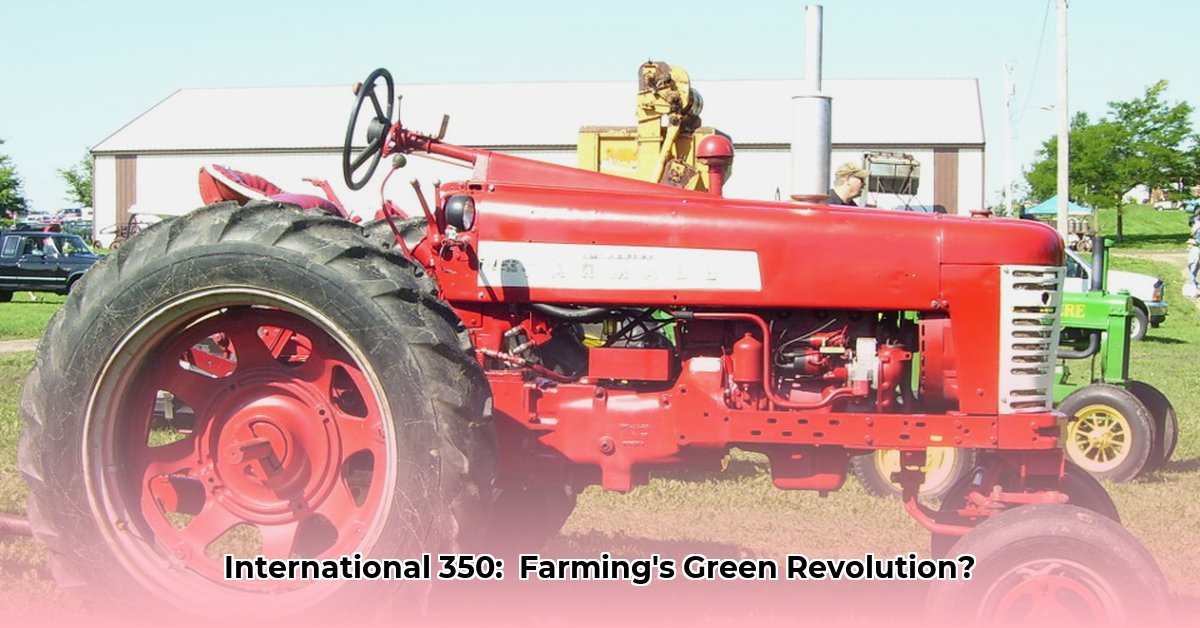
The International Harvester 350 tractor, produced from 1956 to 1958, represents a pivotal moment in agricultural mechanization. This article explores its design, performance, and lasting influence on farming practices, particularly in the context of modern sustainability goals. While not explicitly designed for sustainability, the 350 offers valuable insights into the evolution of agricultural technology and its relationship with environmental considerations. For more on antique International Harvester tractors, visit this useful resource.
Design and Versatility: A Jack-of-All-Trades
The International Harvester 350's success stemmed from its adaptability. Farmers could choose from gasoline, diesel, or liquid petroleum gas (LPG) engines (different fuel types with varying environmental impacts), paired with either a 5-speed or 10-speed transmission. This versatility allowed the tractor to suit various farm sizes and fuel availabilities. Furthermore, specialized versions catered to specific needs: utility models for general farm work, row-crop models for planting and harvesting, high-clearance versions for orchards, and wheatland models for optimal performance in specific terrains. This flexibility made the 350 a highly valuable asset on farms across the country. Was this flexibility a key factor in its overall contribution to agricultural productivity?
Fuel Efficiency and Environmental Impact: A Historical Perspective
Assessing the 350's environmental impact requires careful consideration. Precise data on long-term fuel economy, maintenance costs, and overall emission levels are limited for this older equipment. This lack of readily available data presents a common challenge in historical agricultural research. However, we can infer some insights. The availability of multiple fuel choices suggests that the environmental footprint likely varied depending on the fuel source used. Further research into historical fuel sources and their effects is warranted. What were the comparative environmental consequences of using gasoline versus diesel or LPG in the IH 350?
Comparing the 350 to Modern Sustainable Farming
Compared to modern tractors, the International Harvester 350 lacks the sophisticated features we now associate with sustainable agriculture. Precision farming technologies like GPS guidance, variable-rate fertilizer application, and automated steering were not yet available during its production. The 350’s emission levels also undoubtedly fall short of current standards. However, studying its limitations provides valuable context for understanding the technological progress made in sustainable agriculture. By comparing the 350 to today's equipment, we gain a clearer perspective on the advancements in fuel efficiency, reduced emissions, and minimized environmental impact. How did these advancements transform agricultural practices?
The IH 350's Legacy: Areas for Future Research
The International Harvester 350's story remains incomplete, offering significant potential for further historical research. A deeper investigation could yield valuable insights into the evolution of agricultural technology and its relationship with sustainable practices. Several groups have a vested interest in such research:
- Agricultural historians could investigate the 350's role in the intensification of agriculture and its impact on farming methods.
- Museum curators could focus on preserving examples of the 350 and creating engaging exhibits to educate the public.
- Sustainable agriculture researchers could compare the 350's efficiency and environmental impact to modern tractors, providing a baseline for measuring progress towards more sustainable agricultural practices.
The International Harvester 350 tractor, a product of its time, serves as a fascinating illustration of the ongoing evolution of farming technology. Further research will undoubtedly enhance our understanding of its place in agricultural history and its indirect contribution to the pursuit of sustainable farming. This historical perspective is crucial to informing future advancements in agricultural technology. How can we leverage lessons from the past to create a more sustainable agricultural future?